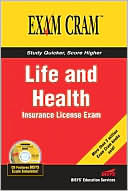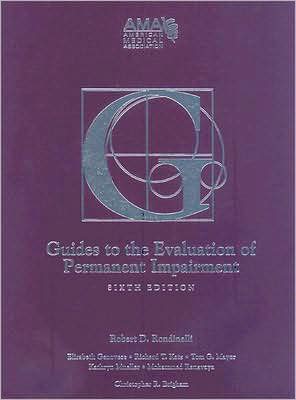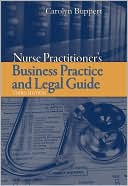Law And Social Work Practice
This completely rewritten and updated new edition of a practical text continues to provide a firm introduction to law and legal processes and their relation to social work practice. Using Clinton's welfare reform act of 1996, Albert provides a conceptual framework to illustrate how socio-legal problems emerge in the welfare state, and presents the skills base necessary for effective social work response. A new section on socio-legal issues highlights many fields where social worker-lawyer...
Search in google:
This completely rewritten and updated new edition of a practical text continues to provide a firm introduction to law and legal processes and their relation to social work practice. Using Clinton's welfare reform act of 1996, Albert provides a conceptual framework to illustrate how socio-legal problems emerge in the welfare state, and presents the skills base necessary for effective social work response. A new section on socio-legal issues highlights many fields where social worker-lawyer partnerships can occur, such as civil rights and advocacy, the death penalty, liability for neglect in nursing homes, informed consent and medical treatment, and much more. Filled with techniques for reading and understanding judicial opinion, legislative statues, and bills, this new edition will appeal to all professors of law and social work courses, as well as courses on the welfare state.
ContributorsxvForewordxviiPrefacexxiAcknowledgmentsxxviiPart IAn Introduction to Legal Processes1Law and the Social Environment3Characteristics of Law3Sources and Functions of American Law7Limits of the Law122The Judicial Process: Part One: The Nature of Case Law19Case Law and the Doctrine of Precedent19Case Law and "Res Judicata," "Reversal," and "Overruling"21Case Law, Ratio Decidendi and Dicta23Case Law, Stare Decisis, and the Court Hierarchy23The Development of Case Law and the Judicial Function25Case Law Development and the Legal Reasoning Process28The Analysis of a Judicial Opinion34The Synthesis of Case Law35King v. Smith, 392 U.S. 309 (1968)36Shapiro v. Thompson, 394 U.S. 618 (1969)44Goldberg v. Kelly, 397 U.S. 254 (1970)50Wyman v. James, 400 U.S. 309 (1971)56Dandridge v. Williams, 397 U.S. 471 (1970)643The Judicial Process: Part Two: Introduction to Givil Procedure71The Structure of a Civil Lawsuit71Facts72Beginning the Civil Process: The Complaint from Roe v. Anderson76The Complaint76Roe v. Anderson, 966 F. Supp. 977 (1997)85Brief of Social Scientists as Amici Curiae in Anderson v. Roe92Saenz v. Roe, 119 S. Ct 1518 (1999)1004The Legislative Process112Legislative Authority, Structure and Function112The Design of Legislation114Stages of Legislative Process: Part One: Enacting Substantive Legislation116Personal Responsibility and Work Opportunity Reconciliation Act of 1996118Remarks by President Clinton at the Welfare: Reform Bill Signing143Stages of Legislative Process Part Two: Appropriating for Legislation147How Does the Government Create a Budget?149How to Read a Statute or Bill1525The Interpretation of Legislation: The Search for Legislative Intent155Conceptualizing Legislative Intent155Strategies for Identifying Legislative Intent158Legislative Intent in Action: A Case Example166Dandrige v. Williams, 397 U.S. 471 (1970)1676The Implementation of Legislation168A Framework for Analyzing the Implementation of Legislation169Implementation of the Personal Responsibility and Work Opportunity Reconciliation Act of 1996170Judicial Interpretation of PRWORA: Implications for Implementation175City of Chicago v. Shalala (ILL. D.C.: 1998)176Saenz v. Roe, 119 S. Ct. 1518 (1999)181Administrative Evaluation of Legislative Implementation: The Pennsylvania Attorney General Review of Act 35 (Pennsylvania's Welfare Reform Act)181Interdependence of Legal Processes1897The Administrative Process210Key Features of Administrative Authority210Stages in the Administrative Process216Judicial Interpretation of Regulations217Title 45-Public Welfare218Anderson v. Edwards, 514 U.S. 143 (1995)219Part IISkills Dimension8Social Work Advocacy in Legislative and Administrative Processes227Legislative Advocacy Tactics227Legislative Advocacy and Offering Testimony229Examples of Legislative Testimony235Social Work Advocacy and the Administrative Process2439Legal Research Resources and Techniques246Resources for Finding the Law246A Uniform System of Citation252Suggested Legal Research Techniques252Electronic Legal Research Resources255A Concluding Note25510Court Testimony and Evidence256Evidence Concepts and Principles256Witnesses261In Re Custody of J.S.S., 298 Pa. Super. Ct. (1982)277Living with Uncertainty28111Privileged Communications and Worker-Client Relations282Creating the Communications Privilege282Asserting the Privilege284Bower v. Weisman, 669 F. Supp. 602 (1987)286State v. Andring, 342 N.W. 2d 128289Exceptions to the Privilege294The Duty to Warn: The Legacy of Tarasoff29612Social Work Privilege in Federal Courts: Deconstructing Jaffe v. Redmond (1996)298The Facts of Jaffe v. Redmond299Reconciling the Oral Argument in Jaffe v. Redmond with the Court's Final Decision301Conclusion318Jaffe v. Redmond, 518 U.S. 1 (1996)319Part IIISocio-Legal Issues in Social Work Practice13Social Worker-Lawyer Partnerships: Historical and Contempory Perspectives329Historical Antecedents329Legal Content in Social Work Education: Preparing Students for Interprofessional Practice333Legal Scholarship335Legal Content in Social Work Education338Knowledge of the Law339Skills in Legal Practice340Conclusion34414Second Parent Adoption and Same-Sex Relationships346The Problem347The Contours of the Case Law347Conclusion351Adoption of Tammy, 416 Mass. 205 (1993)35215The Civil Rights Remedy of the Violence Against Women Act of 1994359An Overview of the Violence Against Women Act of 1994359Major Provisions of VAWA360The Civil Rights Remedy of VAWA361Conclusion365Christy Brzonkala v. Virginia Polytechnic Institute, 132 F.3d 949 (1997)36516Informed Consent for Medical Treatment381Robert Long and Raymond Albert Schloendorff v. Society of New York Hospital (1914)382Schloendorff and Its Progeny384Schloendorff's Legacy: Doctrine of Informed Consent385Conclusion389Canterbury v. Spence, 150 U.S. App. D.C. 263 (1972)389Cruzan v. Director, Missouri Dep't. of Health, 497 U.S. 261 (1990)39717Liability for Neglect in Nursing Homes408Federal and Pennsylvania State Nursing Home Regulations408Application of Criminal Statutes to Acts of Corporate Negligence411Case Law Analysis415Future Directions420People v. Casa Blanca Convalescent Homes, 159 Cal. App. 3d 509 (1984)42118Imposing the Death Penalty on Juveniles429Historical Antecedents429Evolution of Precedent and the Role of the Socio-Political Environment431Retreat from Progress434Future Trends436The State of Washington v. Furman, 122 Wash. 2d 440 (1993)43619Charitable Organizations and Lobbying444Case Law Addressing Federal Lobbying Statutes444The Unconstitutional Conditions Case Law446The "Nonsubsidizing" Case Law451Conclusion453Rust v. Sullivan, 500 U.S. 173 (1991)454Regan v. Taxation with Representation, 461 U.S. 540 (1983)46420Lobbying Reform and Nonprofit Organizations: Policy Images and Constituent Policy467Istook and Earlier Concerns About Nonprofit Organizations470Shifting Policy Image and New Political Momentum477Policy Evolution and Political Learning48221Restrictions to Legal Services for the Poor485The Office of Economic Opportunity Legal Services Program486Creation of the LSC-A Move to Depoliticize the Agency487Case Law491Challenging the 1996 Restrictions494Conclusion497Notes499Table of Cases509References513Index525








